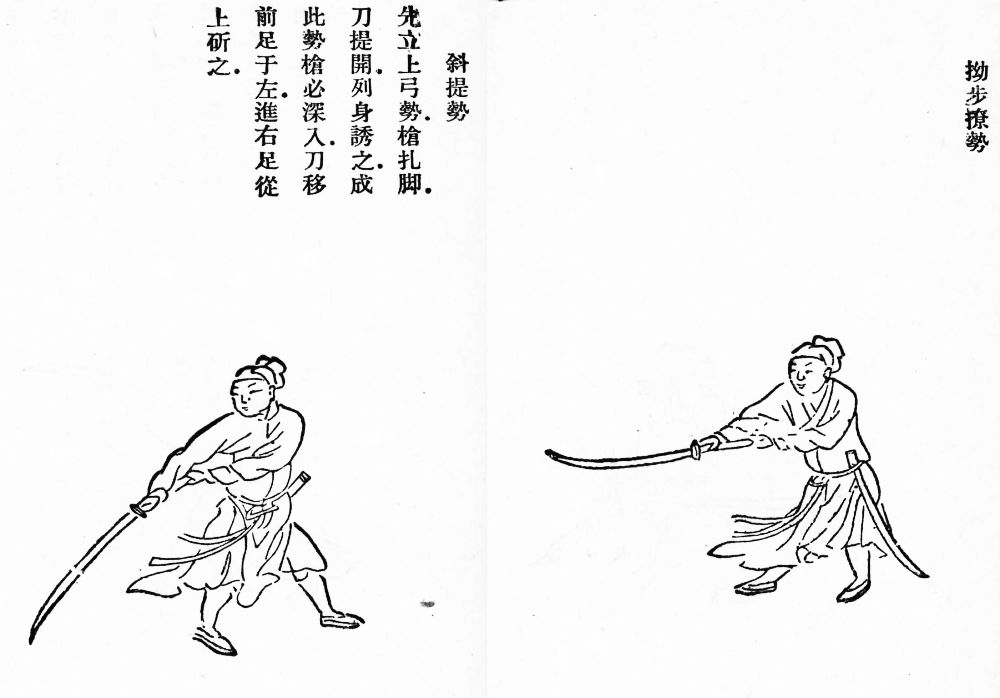Shoubilu 手臂錄 is a book on fighting techniques with stick (qiangfa 槍法) and sword written during the Ming period 明 (1368-1644) by Wu Shu 吳殳 (1611-1695), alternative name Qiao 喬, courtesy name Xiuling 修齡, style Cangluzi 滄塵子, from Kunshan 昆山, Jiangsu. Of his life, practically nothing is known, but his poems were praised by Wang Shizhen 王士禎 (1634-1711) and Yan Ruoqu 閻若璩 (1636-1704). Wu also wrote the poetry critique Weilu shihua 圍爐詩話.
The book, with the preface dated 1678, consists of five fascicles, of which the last one is a kind of appendix including two brief texts, namely Emei cangfa 峨嵋槍法 by the Buddhist monk Pu'en Lifa 普恩立法 (lay name Cheng Zhenru 程真如), and Menglutang cangfa 夢綠堂槍法 by the monk Hongzhuan 洪轉. Both texts expound methods of stick-fighting. Wu Shu's main text also speaks about fighting with swords and similar weapons.
In his early years, Wu was personally trained by Shi Jingyan 石敬巖 and was also privately instructed by Cheng Zhenru 程真如. He also studied books on the fighting techniques of Shaolin Monastery 少林寺. The first juan of his book explains the basics of stick-fighting techniques by the use of various fighting tools. The next part of the book is dedicated to the techniques of the masters Shi and Cheng, his teachers. Images illustrate some methods to show movements and positions of the hand and feet, and how to move forward when fighting an enemy. The third juan is dedicated to training with a simple sword (dandao 單刀 or wodao 倭刀). Wu Shu's book is thus an excellent overview of the most important schools of stick fighting, most of them named according to the family names of masters, namely Shijia qiang 石家槍, Shajia ganzi 沙家桿子, Yangjia qiang 楊家槍, Majia qiang 馬家槍, and Shaolin qiang 少林槍.
The differences between these schools and their methods are illustrated. The school of Master Shi, for instance, preferred a stick 9.7 feet (chi 尺, see weights and measures) long and weighing about ten pounds. The force was applied to the wrists, while the arm was used to support the wrist, and the body to help the arms.
The stick of the school of Master Sha had a length of eight feet to 2.4 fathoms (zhang 丈). The body firmly rested on the two feet, with the body following them in each movement, and the arms following the body, and the wrists the arms.
The book is found in the series Jieyueshanfang huichao 借月山房匯抄, Zeguzhai chongchao 澤古齋重抄, Zhihai 指海, Huashuwu congshu 華書屋叢書, Saoye Shanfang congchao 掃葉山房叢鈔 and Congshu jicheng chubian 叢書集成初編.
 |